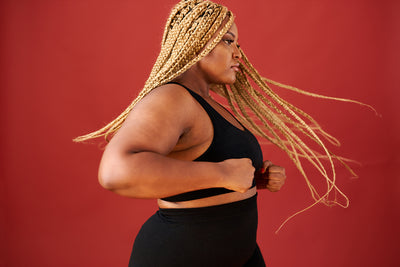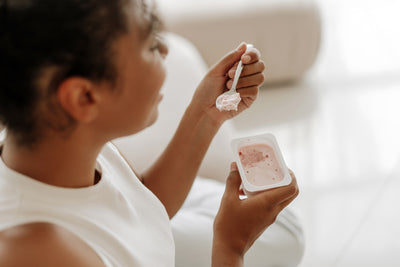Pilates has long been recognized for its ability to enhance core strength, flexibility, and posture. Many people begin their Pilates journey with Mat classes, but apparatus-based Pilates classes ( like The Fit In's Pilates Reformed classes that use equipment like the Reformer, Tower, and Chair) provide a different experience. While both styles have their merits, there are notable benefits to taking apparatus-based classes over Mat classes, especially for those seeking more variety, support, and a full-body workout.
More Accessible and Supportive than Mat Classes
One of the major advantages of using Pilates apparatus is the increased support it provides. Mat classes require a lot of body control and can be quite challenging, particularly for beginners or individuals with limited core strength, flexibility, or balance. The equipment, especially the Reformer and Tower, allows participants to better control their movements and receive assistance during exercises.
The springs and pulleys in the Reformer and Tower apparatus offer adjustable resistance, helping to reduce strain and ensuring correct alignment during movements. This support helps people of all fitness levels, including those recovering from injuries, as the apparatus can assist with maintaining proper form. In contrast, Mat exercises often require a higher level of body awareness and strength to prevent strain, making them potentially more difficult for beginners.
Variety of Movements for a Full-Body Workout
One of the key benefits of using Pilates equipment is the ability to perform a greater variety of exercises, engaging more muscle groups than in a traditional Mat class. While Pilates Mat work mainly focuses on the core and some leg and arm movements, apparatus-based classes incorporate equipment that targets additional areas of the body.
For example, the Reformer can be used to perform leg presses and squats, while the Tower offers opportunities for pulling and pushing exercises that engage the arms, back, and shoulders. The Chair adds an entirely different layer of challenge, offering exercises that improve coordination, balance, and strength. Each apparatus offers numerous adjustments in terms of resistance, which adds versatility and ensures that muscles are continually challenged in different ways, leading to faster results.
Better Adaptability for All Levels
Pilates apparatus offers more adaptability than Mat work, which is another reason many practitioners gravitate toward the equipment-based approach. In Mat classes, the difficulty of exercises is generally fixed, relying on gravity and body weight. This can be too difficult for some and not challenging enough for others.
With the apparatus, instructors can adjust the tension of the springs on the Reformer or Tower to make movements easier or harder, depending on the student’s ability level. This makes Pilates apparatus classes suitable for everyone, from beginners to advanced practitioners. Whether someone is rehabilitating an injury or looking to build strength and endurance, the adjustable nature of the equipment allows for a more personalized workout experience.
Greater Focus on Precision and Alignment
While Pilates Mat work emphasizes control and precision, the apparatus allows for even more focus on alignment due to the resistance and guidance the equipment provides. The Reformer’s straps and carriage, for example, help guide movements, ensuring participants use the correct muscles and reduce the risk of compensating with the wrong ones.
Pilates apparatus can be particularly beneficial for improving balance and coordination since many exercises require the practitioner to move against resistance while maintaining stability. This not only strengthens the core but also enhances neuromuscular coordination, something that Mat classes may not be able to target as effectively.
Rehabilitative Benefits
For individuals recovering from injuries, Pilates apparatus provides a safer and more effective way to regain strength and mobility. The controlled nature of the exercises, combined with the support of the equipment, allows for low-impact movements that can aid recovery without the risk of aggravating the injury. Many physical therapists and rehabilitation centers incorporate Reformers into their programs for this reason.
The Tower and Chair also offer ways to isolate certain muscles or avoid placing strain on injured areas. For example, someone with a lower back injury can perform supported exercises on the Tower that strengthen the back and core without the strain that traditional Mat exercises might impose. This makes Pilates apparatus an ideal choice for individuals with mobility challenges or chronic pain conditions.
Conclusion
Both Mat and apparatus-based Pilates offer tremendous benefits, but Pilates apparatus classes (using the Reformer, Tower, or Chair) tend to be more accessible, adaptable, and varied. The equipment provides additional support and resistance, which makes exercises more achievable for beginners and more challenging for advanced practitioners. The variety of movements and resistance options also provide a full-body workout, offering more opportunities for muscle strengthening, flexibility, and rehabilitation.
For those who find Mat classes too challenging or want a workout that provides more variety and support, Pilates apparatus classes like The Fit In's Pilates Reformed sessions offers an excellent alternative, enabling better results and a more personalized experience.
Sources:
- Alpers, Sue. "Pilates Mat vs. Pilates Reformer: What's the Difference?" Verywell Fit, July 27, 2020. Link
- Segal, Neil A., et al. “The Effects of Pilates Training on Flexibility and Postural Stability: A Randomized Controlled Trial.” Archives of Physical Medicine and Rehabilitation, vol. 85, no. 12, Dec. 2004, pp. 1977–81.
- Granger, Annette. "Reformer Pilates: The Benefits for Your Body." Healthline, March 15, 2022. Link






Leave a comment